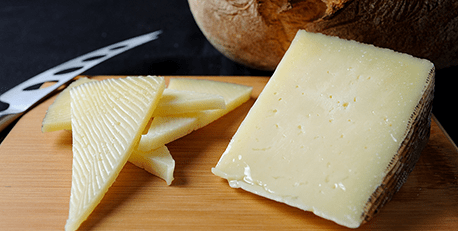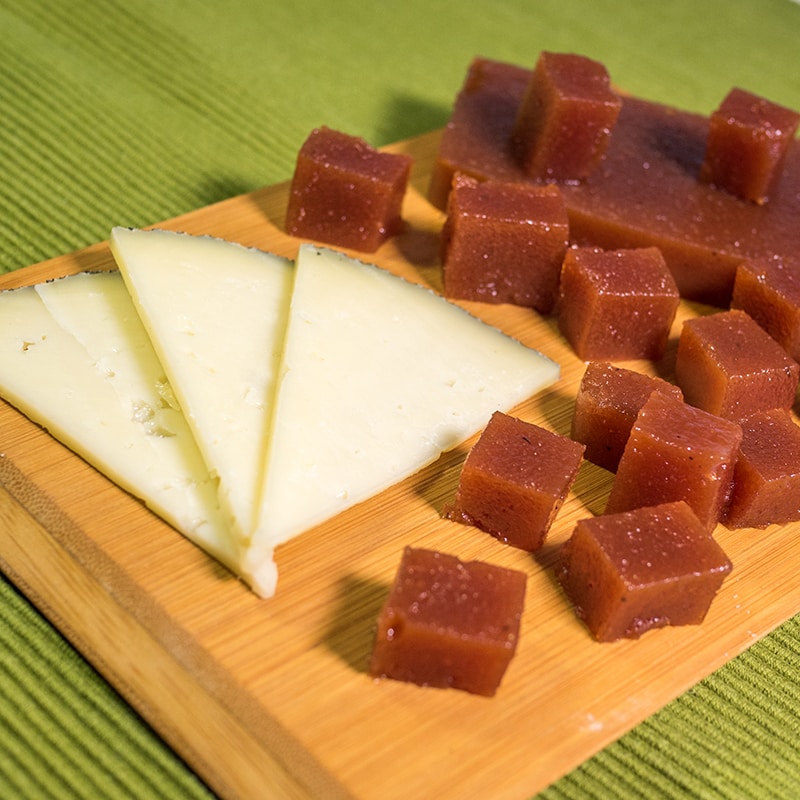The Semi-cured Manchego Cheese is a perfect delight in all its magnitudes. Throughout this article you will know why.
In Spain we are very cheese, especially Manchego cheese, like ham with Iberian ham. We are also many of preparing lunches and dinners, and celebrating anything, no matter how small. Here you can find out about our offer of Manchego cheeses with Denomination of Origin.
And what is it that is never missing from the table? The semi-cured Manchego cheese, you are right. The semi-cured Manchego cheese has become an irresistible in our lives, we need it as much as breathing.
Its delicious and smooth flavor does not leave anyone indifferent, even the most exquisite palates. In addition, we not only consume freshly sliced semi-cured Manchego cheese, but we also use it in a wide variety of recipes: breasts stuffed with cheese, 4-cheese pizza, macaroni gratin with cheese, or even desserts such as cheese cake or cheese flan .
Obviously, in any Spanish cheese factory we will find semi-cured Manchego cheese, but if we go outside of Spain, things get complicated. But Gastronomic Spain has the solution.
What is semi-cured Manchego cheese?
The semi-cured Manchego cheese is a type of cheese cataloged with the Denomination of Origin of La Mancha, which regulates the production and distribution of this delicious and popular cheese. This denomination means that to be considered semi-cured Manchego cheese it must meet a series of requirements and guidelines that respect its Denomination of Origin.
Manchego cheese is made from sheep’s milk, exclusively from the La Mancha breed which includes Toledo, Cuenca, Ciudad Real and Albacete. These four provinces are the ones that produce semi-cured Manchego cheese.
Why semi-cured Manchego cheese? The semi-cured Manchego cheese differs from the rest of the Manchego cheeses by its maturation, a minimum maturation of 3 months, depending on the size in question.
Elaboration of Manchego cheese
It is important to note that Manchego cheese can be made both in pasteurized milk and raw sheep’s milk, as long as the requirements established by the Denomination of Origin are met.
According to this denomination, there are some guidelines to carry out the process of making semi-cured Manchego cheese. You have to try our Don Cayo semi-cured Manchego cheese.
First of all, the milking and transport of the milk. The milked milk remains at room temperature, so it will transform into cheese. While the collection and transport of the milk is carried out in good hygienic conditions, guaranteeing optimum quality.
Second, the curdling and cutting of the curd. The coagulation of the milk is done through a hot water bath for 30 or 60 minutes. The curd that is obtained is subjected to cuts, to the taste of the producer.
Third, the molding and pressing. Said curd will be introduced into molds and once in the mold, it is pressed, with a time of 1 and 6 hours. During the molding process, the casein that is identified with the number and series provided to each piece of Manchego cheese is applied.
This is followed by desmolado and salted. The cheese is extracted from the interior of the mold and the cheese is salted, which can be done wet (brine) or dry, even in a combination of both.
Finally, the maturation. Depending on the maturation of the cheese it will be cataloged in one way or another. In the case of semi-cured Manchego cheese, it will have a minimum of 3 months of maturation.
Other types of manchegos
As we have mentioned before, depending on the maturation of the cheese in question, it will be classified of one type or another. Let’s see what other types exist in addition to semi-cured Manchego cheese.
Cured Manchego cheese
Cured Manchego cheese is next on the list, that is, semi-cured Manchego cheese is the Manchego cheese with less time to mature, with at least 3 months.
In the case of cured Manchego cheese, it has a maturation of 6 months or more, depending on the size.
Aged or old manchego cheese
As for old Manchego cheese, it is the one that has the longest maturation time, with a minimum of 12 months, even longer.
How to identify a Manchego cheese?
To distinguish a good Manchego cheese from the rest of the cheeses there are a series of points to take into account before buying it.
Hashtag. Manchego cheeses must bear the commercial label and in the case of raw milk cheese, it must include the word “artisan”.
Numbered back label. The back label is attached to the commercial label. It is made up of the logo of the Denomination of Origin and a series of numbers that identify it.
Casein plate. The new casein plate is embedded in the cheese rind with the terms: D.O.P. MANCHEGO CHEESE”.
European logo. This distinctive ensures that the cheese respects the characteristics established for Manchego cheese.
Both the semi-cured Manchego cheese, as well as the cured and old, must be identified with these requirements if they truly meet the established characteristics.
Buy semi-cured Manchego cheese online in Europe
Finding a semi-cured Manchego cheese outside of Spain is difficult, although it is known worldwide. But that is no longer a problem, thanks to Gastronomic Spain you can buy the best selection of semi-cured Manchego cheese online, and without any effort.
In addition, you can also enjoy many other typical products of Spanish cuisine, such as Iberian ham, pickled mussels or Cantabrian anchovies. We have a catalog of more than 800 typical products of Spanish gastronomy. Free shipping with orders over € 79.99.








